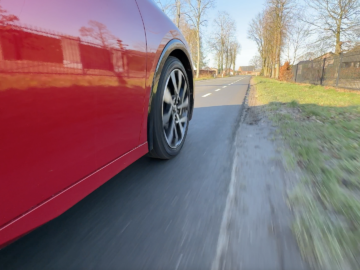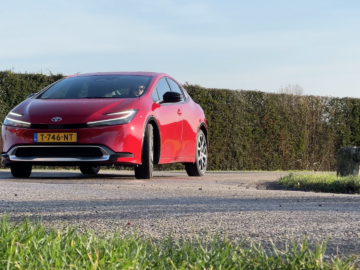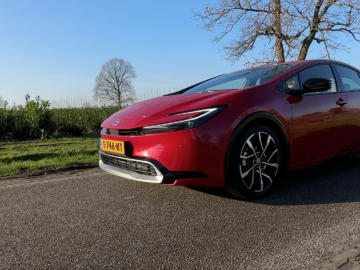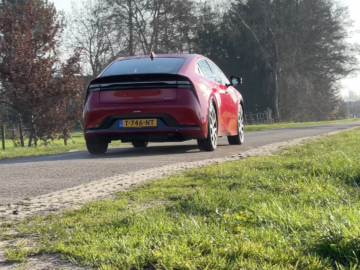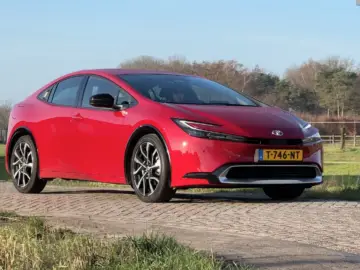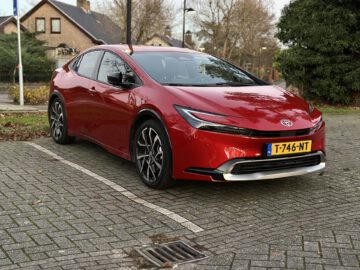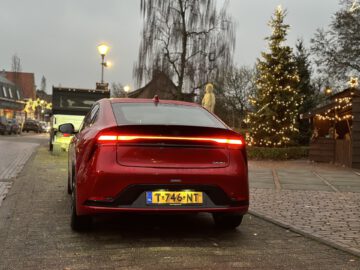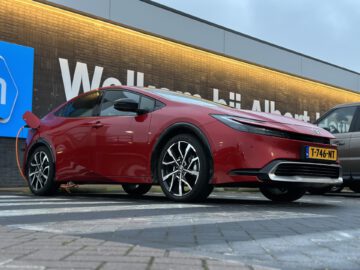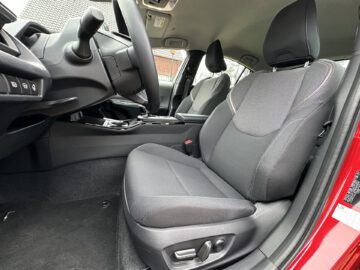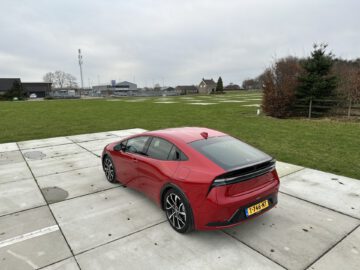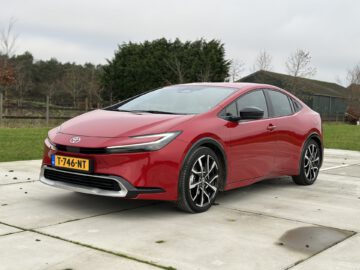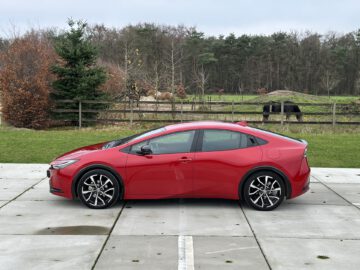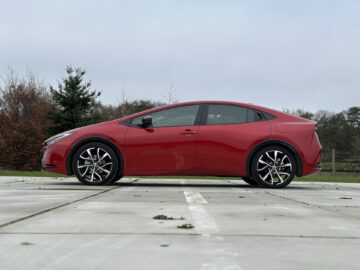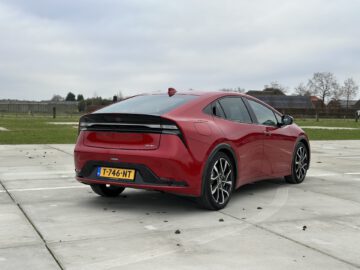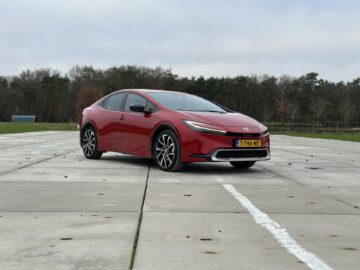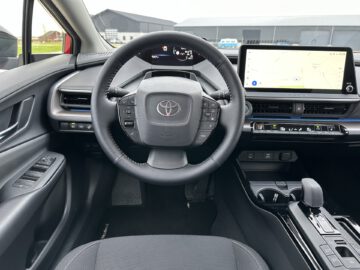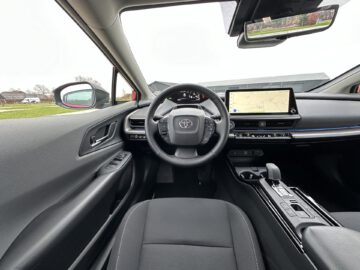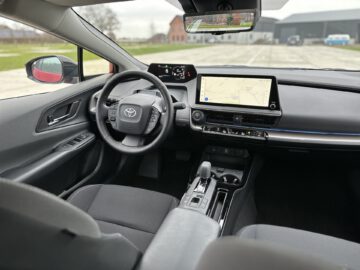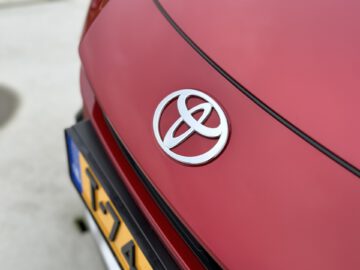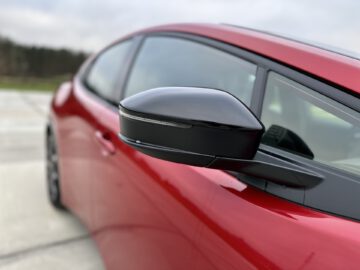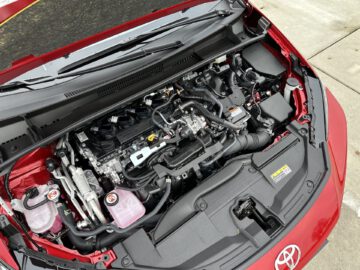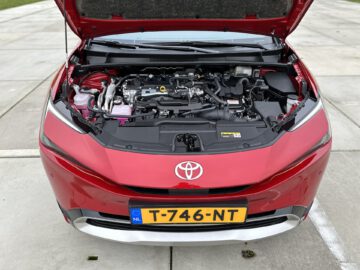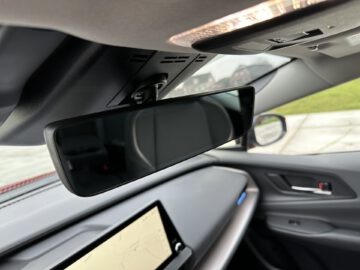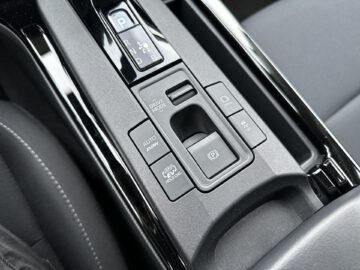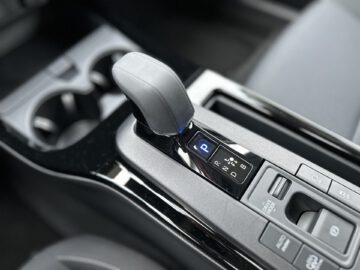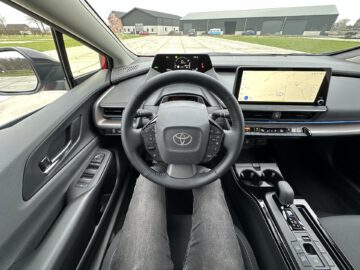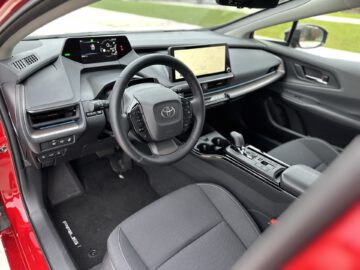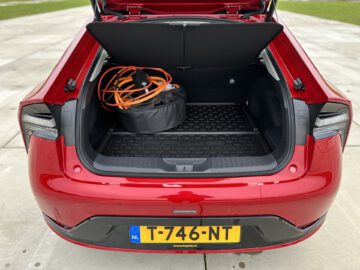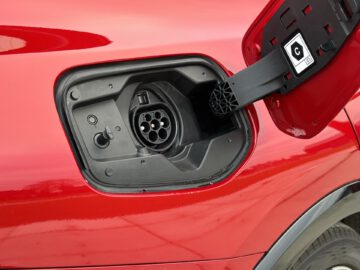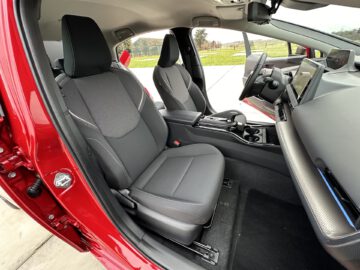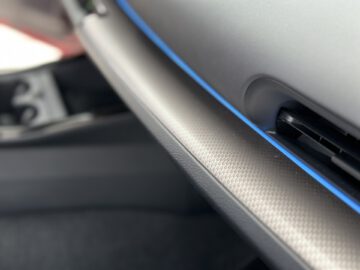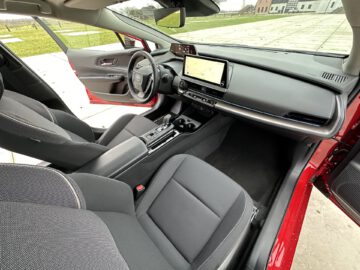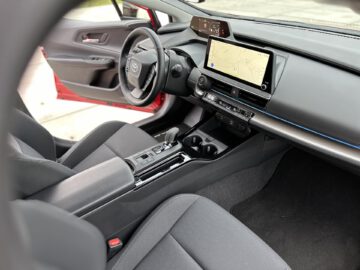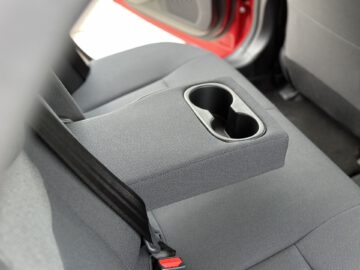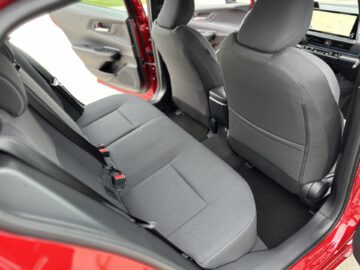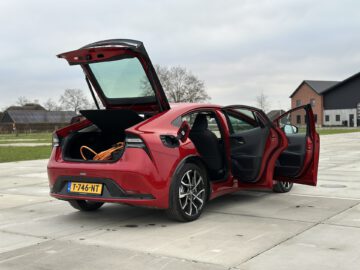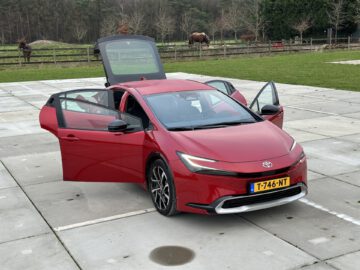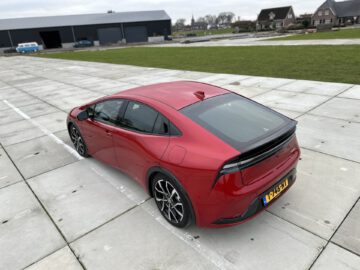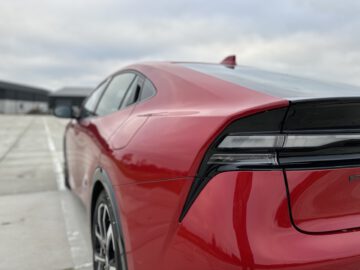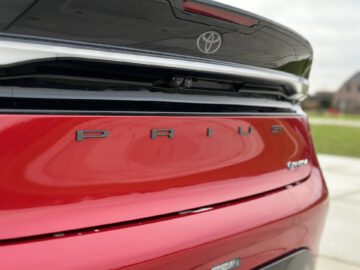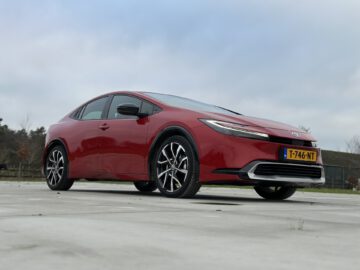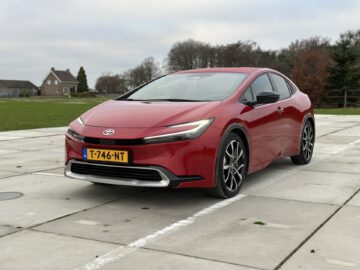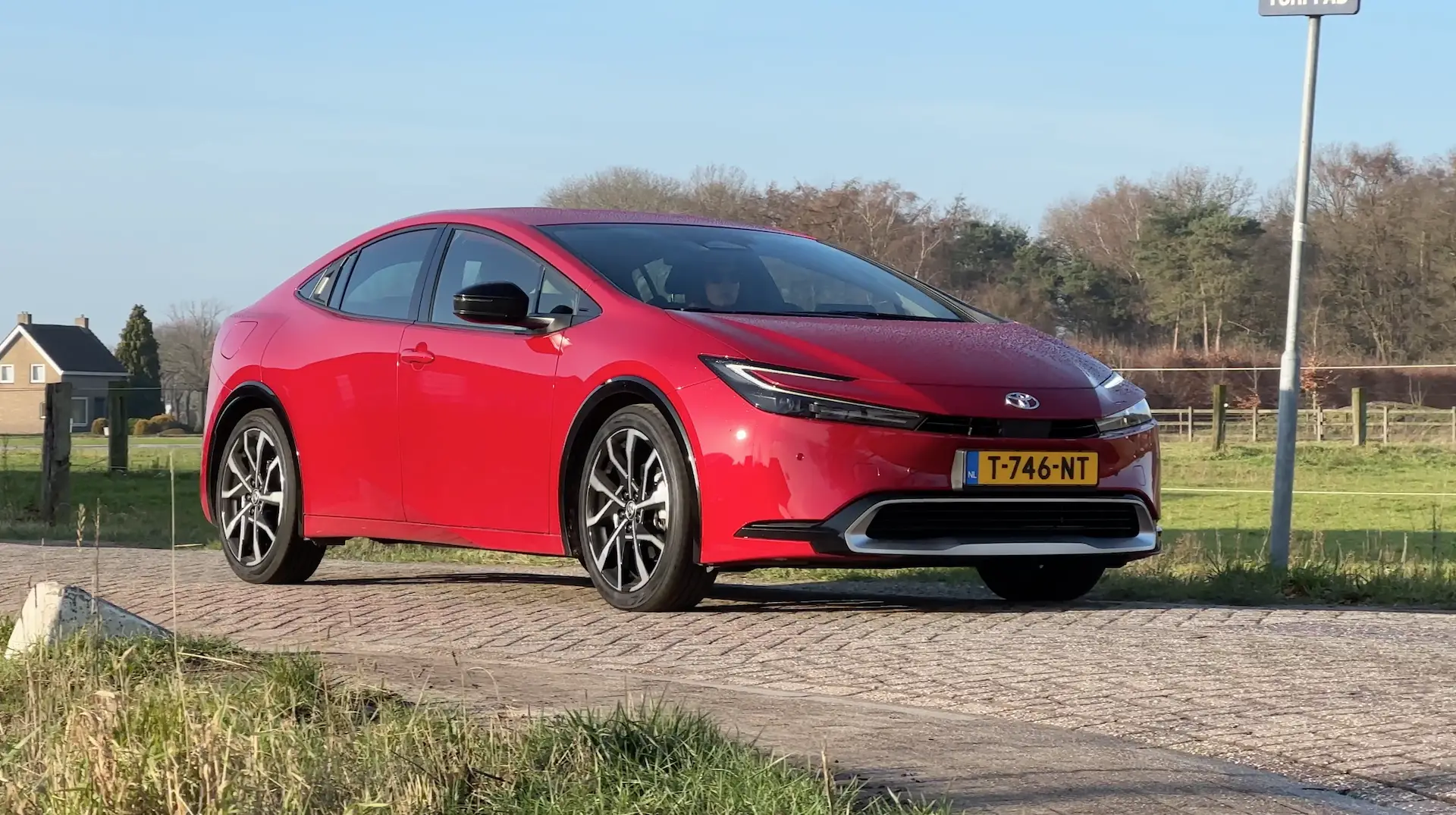Car test – Toyota Prius Plug-in Hybrid (2024), also economical in real-world driving?
Toyota Prius, since 1997
Since the introduction of the Prius in 1997, Toyota has sold more than 23 million electrified cars worldwide. More than 5 million of them are Prius and Prius Plug-in Hybrid. So the Prius is an important car for Toyota. But during the development of the fifth generation, things could be more exciting. Whether that succeeded? Judge for yourself when you see the car. Fine lines, few frills, this is rightfully an impressive car to behold.
Those who want to be beautiful must…
By reducing the overall height by 50 mm, moving the highest point of the roof to the rear and applying wheels with larger diameters up to 19 inches, a sleek and streamlined silhouette has been created. Unnecessary shapes and lines have been omitted, resulting in a simple and “clean” design inspired by natural airflow. The car’s lines also have disadvantages, because those who are a little smaller automatically sit closer to the steering wheel. As a result, visibility all around – due to the sharply sloping windshield and A-pillar – is severely obstructed. This then applies especially to people smaller than 1.60 meters. All-round visibility could be better anyway, as the C-pillars are also on the hefty side and the rear window is quite narrow. Fortunately, you can rely on large side mirrors and a good camera system.
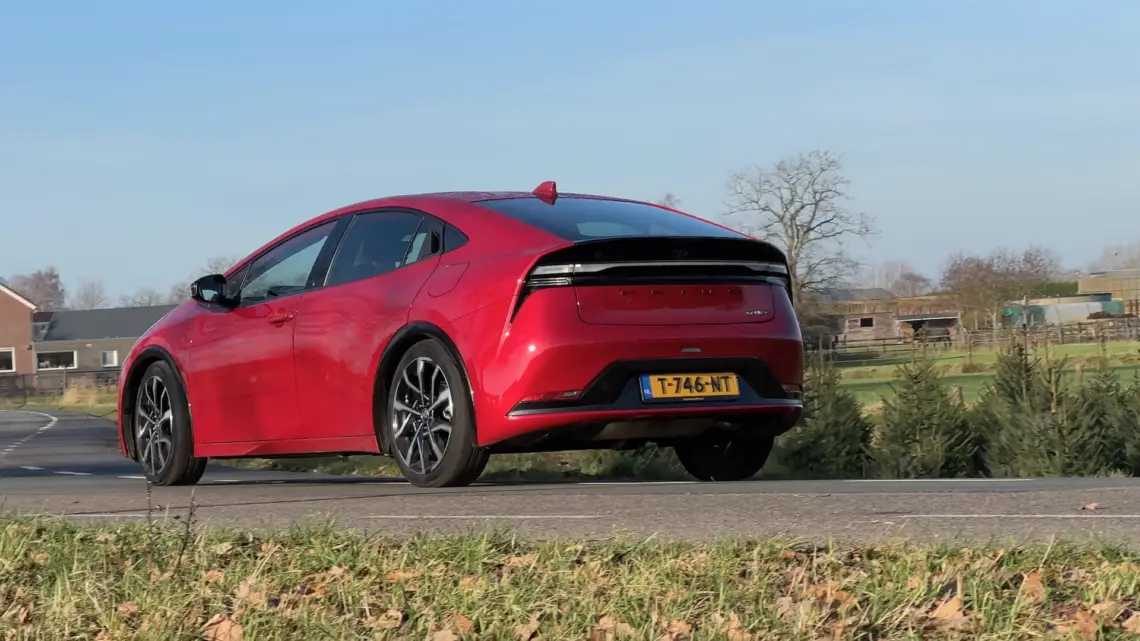
Only as a Prius Plug-in Hybrid
The new Prius will be delivered in Europe only as a Plug-in Hybrid. The new hybrid system consists of a 2.0-liter gasoline engine with 112 kW (152 hp) and a newly developed, 120 kW (160 hp) electric motor. Together good for an output of 164 kW (223 hp) with system torque of 208 Nm. With this, the new Prius guarantees considerably more powerful and alert acceleration compared to the previous model with “only” 122 hp (90 kW). In EV mode, you also enjoy spirited acceleration.
Toyota Prius Plug-in Hybrid (2024), is it really that economical? – REVIEW – AutoRAI TV
11 g/km, is the theory
The 0-100 time of the new Prius Plug-in Hybrid is 6.8 seconds and the car reaches a top speed of 177 km/h. The intermediate accelerations are particularly impressive. The new Prius feels like a seriously fast car, but also a car that is absurdly economical. In the most fuel-efficient version, fuel consumption is just 0.5 l/100 km and combined CO2 emissions are an ultra-low 11 g/km, according to the WLTP test standard. In practice, to achieve that consumption figure, you have to drive electric a lot in particular. But even when the battery is “empty,” you achieve an average consumption of over 1 in 20 with two fingers in your nose. An added benefit of the super-tight design and the associated low drag.
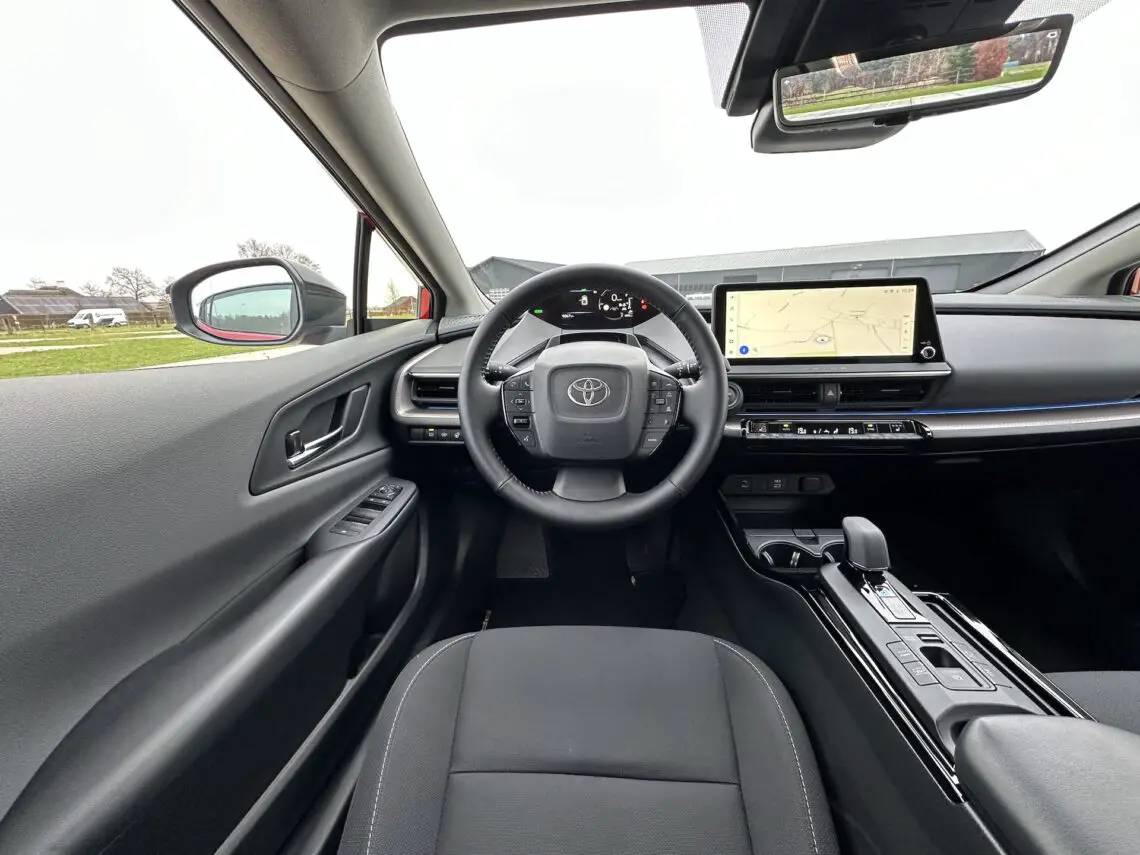
Predictive Efficient Drive system
Fuel economy can be further improved thanks to the new Predictive Efficient Drive system that learns the driver’s regular routes and driving style and automatically optimizes the use of all-electric mode to minimize fuel consumption. The navigation system identifies locations where severe slowing occurs. In those locations, regenerative braking is automatically increased to maximize energy recovery.
When there is an incline or highway on the route that requires extra power, the system proactively selects Hybrid mode to pre-charge the battery. This further improves fuel efficiency. The system becomes increasingly effective as the amount of available data increases with the number of miles driven, allowing the electrified power to be used more and more efficiently.
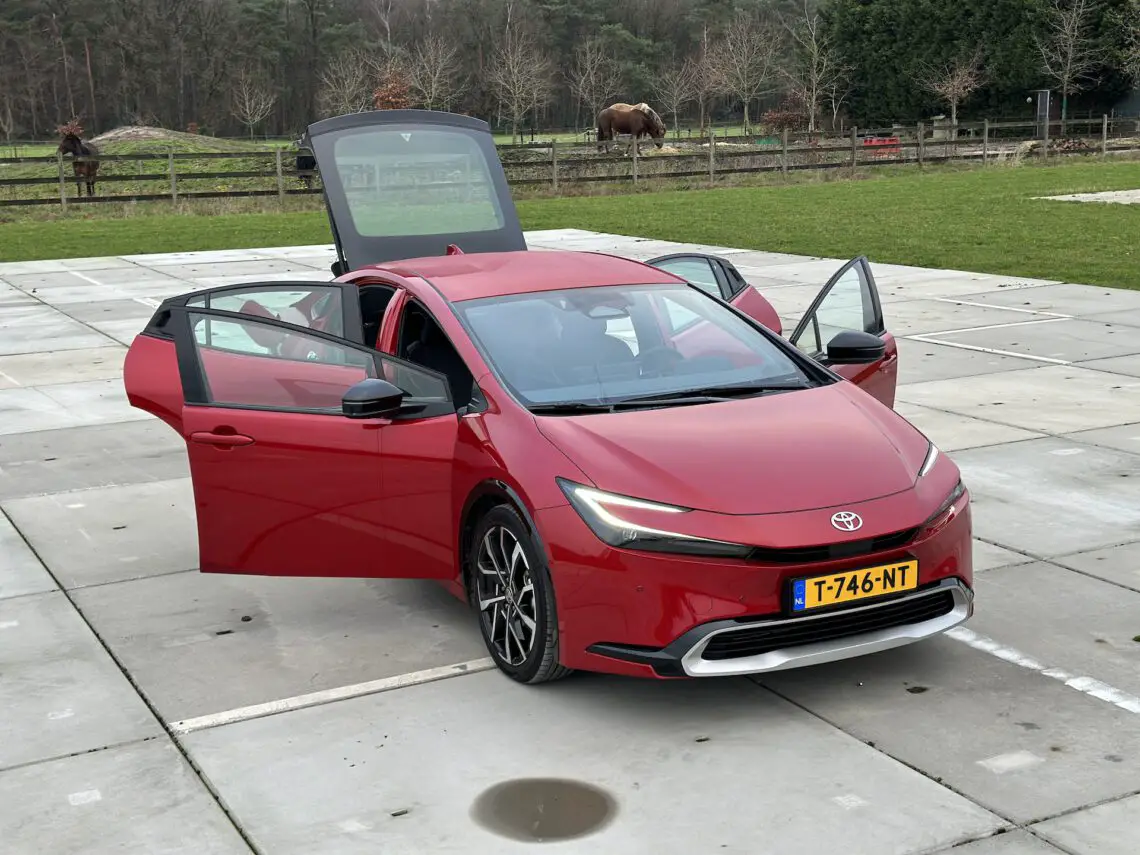
50% greater EV range
The new Prius offers an all-electric range of up to 86 kilometers (WLTP), which is more than 50% greater than the current model. In practice, count on about 65 kilometers. This major step forward is due in part to the newly developed lithium-ion battery with a capacity of 13.6 kWh and battery cells with higher energy density. This allowed the battery to be kept compact enough to fit under the rear seat, resulting in a lower center of gravity.
Battery charging
Battery charging can be done with 2.3 or 3.3 kW, good for a charging time of 7 or 5 hours consecutively. The use of the new battery also enables the introduction of Regeneration Boost, for stronger deceleration and more energy recovery. The driver can select one of three different regeneration modes – soft, medium and strong – achieving up to about 80% of deceleration without the need to depress the brake pedal.
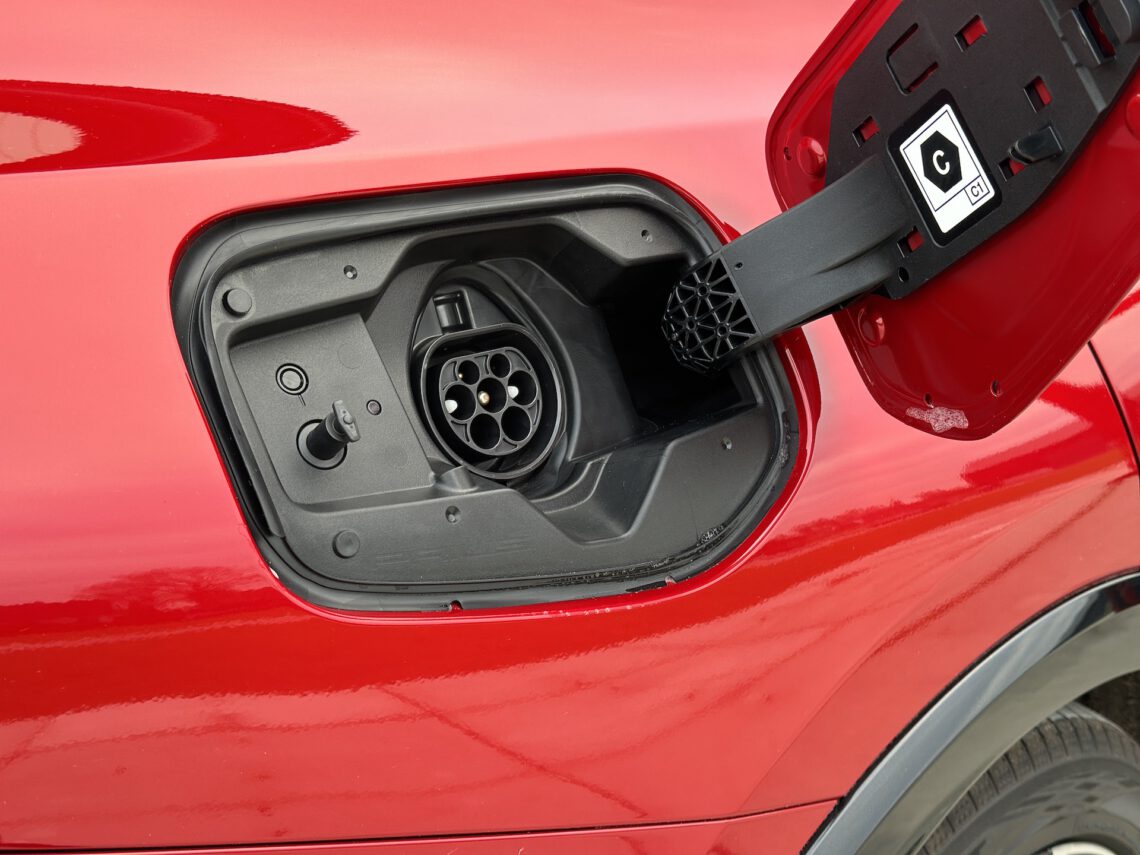
Optional with ‘solar panels’
In pursuit of maximum efficiency, optional clean energy can be generated via rooftop solar cells, via Solar Roof. This can generate up to 8 kilometers of electric range daily, or even fully charge the battery if the car is parked for several days. This test car does not have that option.
GA-C platform
The new Prius is built on the second-generation Toyota New Global Architecture (TNGA) GA-C platform. The latest generation offers tangible advantages in responsiveness, handling and ride quality thanks to its lower weight and higher stiffness. By placing the battery pack under the rear seat and placing the fuel tank lower and more forward than in the previous generation, the car has a lower center of gravity. What do you notice about that in practice? This Prius steers like a sports car. That may sound a bit exaggerated, but it is the absolute truth. The new Prius is a car that also makes the helmsman or woman happy. It lies wonderfully on the road, even in wet conditions. On this point, the Prius scores a lot of points.
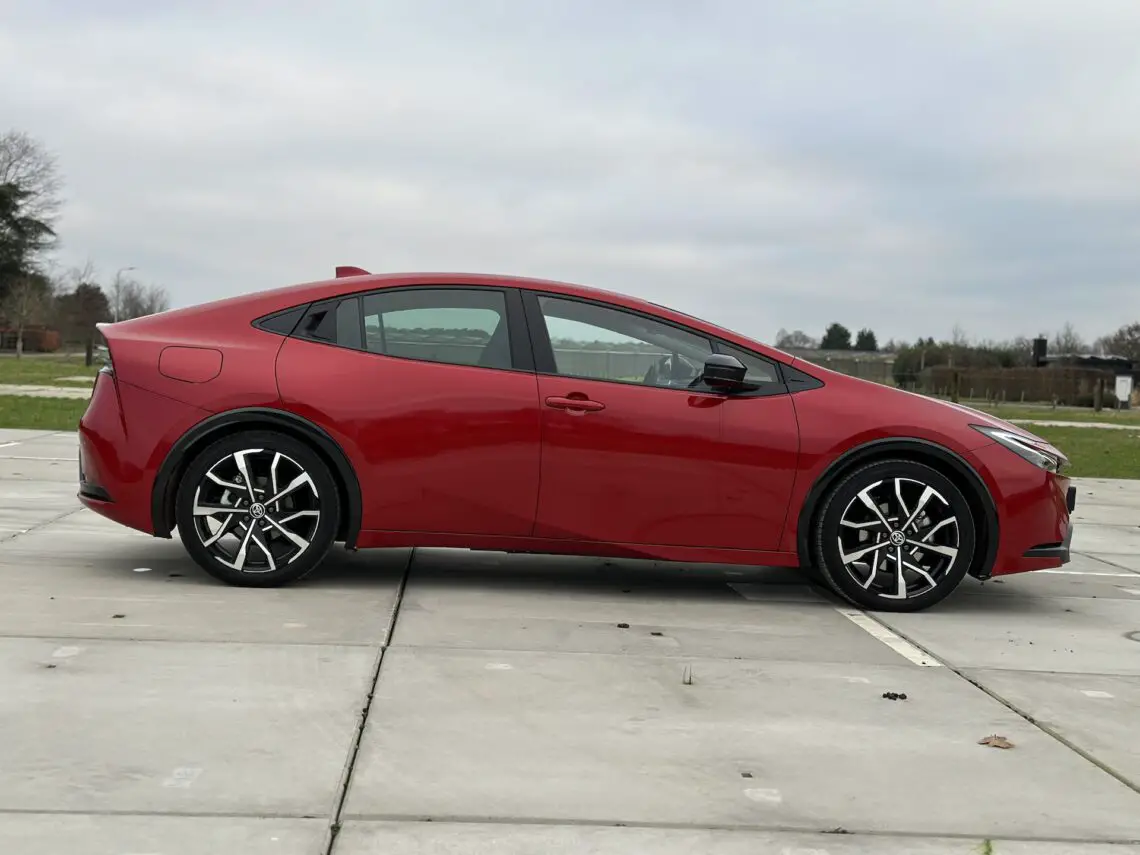
Toyota Prius cons
So does the new generation Toyota Prius have any downsides? Absolutely. Let’s start with the seating position. That one is incredibly good. You can sit low and the steering column is well adjustable, only the digital instrument cluster is in a somewhat unfortunate place. The same applies to Peugeot’s i-Cockpit. The top edge of the steering wheel actually sits just in front of the screen, if you choose the most ideal seating position. The solution? Accept that you can see the screen halfway, or move your steering wheel a little lower. In any case, you have to make a concession. Another point of interest: due to the sloping roofline, headroom in the rear is quite limited. Legroom, on the other hand, is fine.
Numerous driving assistance systems
Also know that the new Prius has numerous driver assistance systems. These include blind spot monitoring, adaptive or regular cruise control, a collision prevention system, a front and rear cross traffic alert system, lane assist and traffic sign recognition with speed warning. For us, the lane assist goes off before we leave, as this system creates an unnatural heaviness in the steering wheel. This is especially unpleasant on N roads.

Speed Alert
Every new car also has mandatory speed warning. Anyone driving 62 km/h on a 60 km/h road will immediately receive visual and audio signals there. That, of course, is not very nice. Fortunately, Toyota can turn it off, but only when the car is stationary. While driving, it is not possible to turn RSA – as the system is called – off. Toyota also had better give all safety system names a simpler name. Because just read along: BSM, PCS, RCTA, RCD, PKSB, RSA, DRCC, LCA, FCTA, TPWS and PBD. Toyota, keep it simple. No buyer understands this. Just use terms like “blind spot monitoring,” speed sign recognition (RSA), etc. But no abracadabra.
‘I disagree’
On another note, when the infotainment system starts up, you have to continuously accept the “terms and conditions. You can only “agree” if the car is in “P. While driving, you can only fill in “I do not agree. So before departure you perform the necessary operations. Do so especially, because with RSA and lane keeping assist turned off, you’ll enjoy the Prius’ qualities even better. Indeed, it is the driving in which this Prius excels. And thrift. That’s a delicious combination. Because sporty driving, without consuming too much fuel, is nice in this day and age.
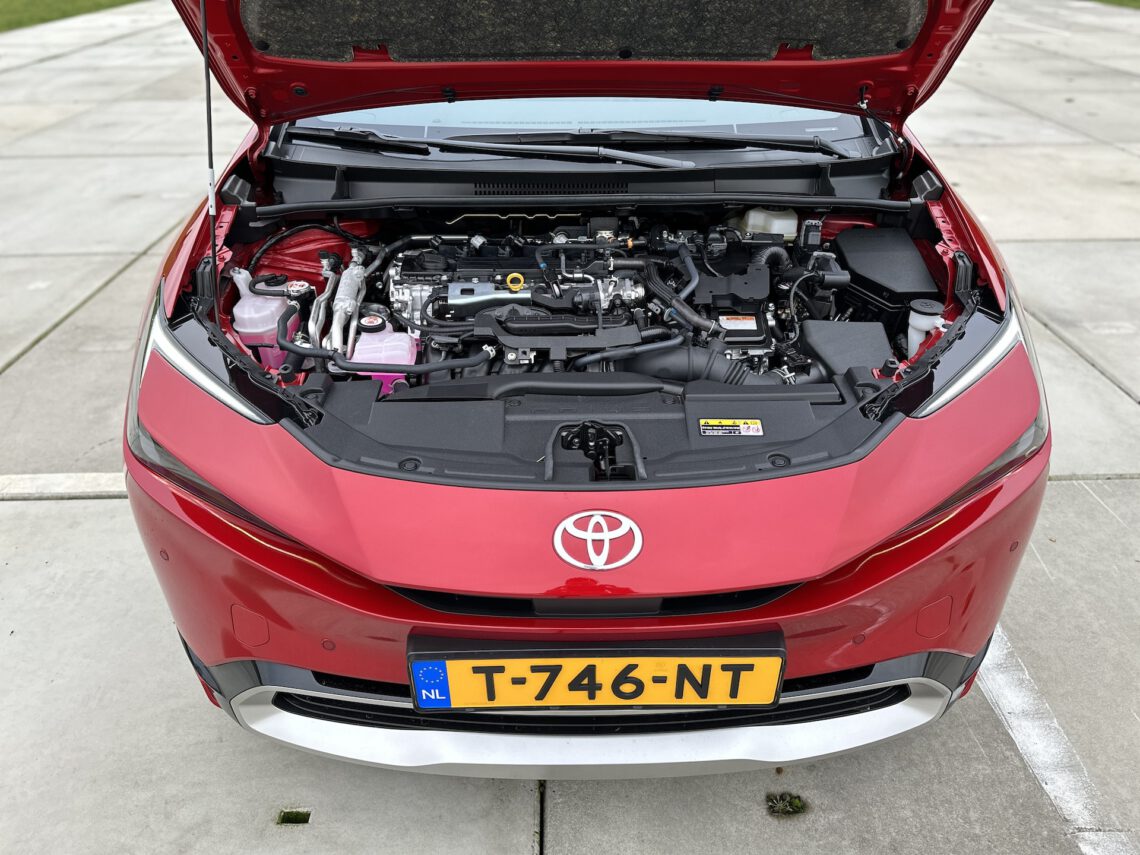
What does a Toyota Prius cost?
Should we cover one more item: the price of the Toyota Prius. Because what should today’s sexiest plug-in hybrid cost? A minimum of 44,695 euros reads the answer. For that amount, you get the Dynamic version. For the Executive driven for us – with continuous LED strip at the rear – you pay at least 47,195 euros. The Solar Edition – with solar panels on the roof – requires an investment of 53,595 euros. Granted, for these amounts you can also buy an all-electric car. But maybe you’re not ready for a BEV yet. Then a plug-in hybrid is a nice intermediate solution.

